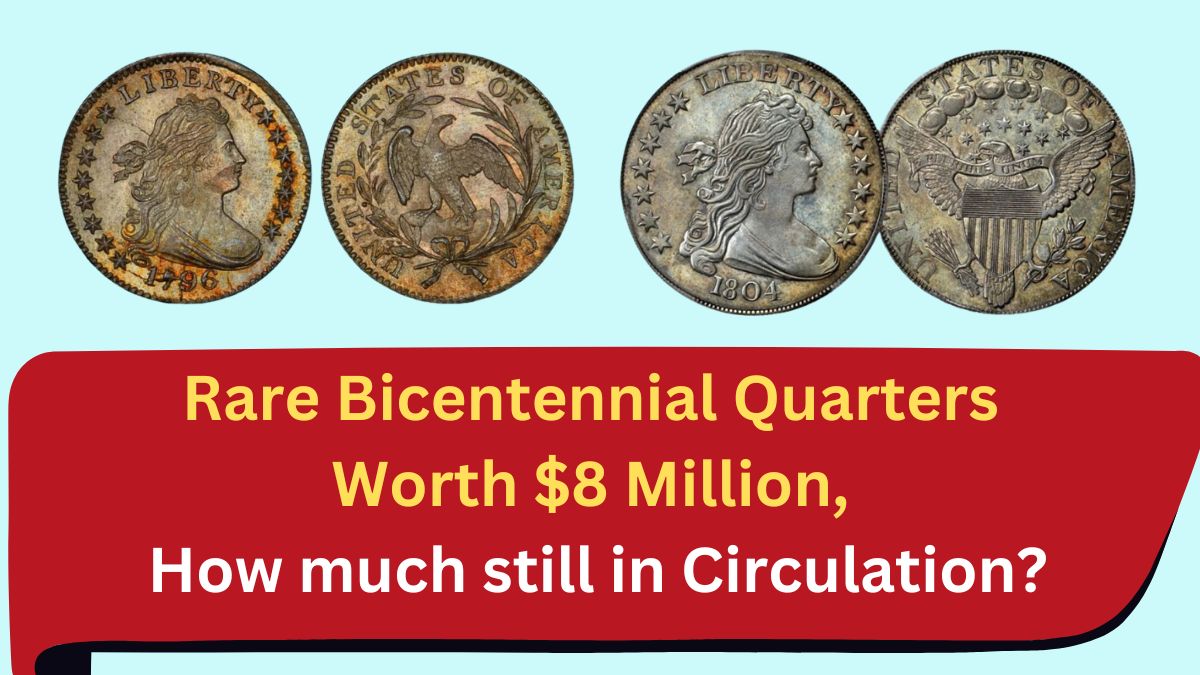The Rare Bicentennial Quarters, produced by the U.S. Mint to celebrate America’s 200th birthday, have become a sought-after collectible due to their historical significance, unique design, and rare variations. These quarters, struck between 1975 and 1976, continue to captivate collectors, with some pieces selling for thousands of dollars at auction.
Here’s everything you need to know about these rare coins.
A Special Coin for America’s Bicentennial
To honor the United States’ bicentennial in 1976, the U.S. Mint issued quarters featuring a distinctive design for the first time in over 50 years. The reverse of these coins showcased a Colonial drummer, created by artist Jack L. Ahr, alongside a torch surrounded by 13 stars representing the original colonies. This special design was introduced to reflect the country’s heritage and celebrate its milestone birthday.
Production Numbers: Philadelphia, Denver, and San Francisco Mint Coins
Millions of these bicentennial quarters were struck at three U.S. Mint facilities—Philadelphia, Denver, and San Francisco. While they were primarily meant for circulation, some special editions were minted in limited quantities, making them highly collectible.
Mintage Numbers: The Common vs. The Rare
The total production of bicentennial quarters was enormous, with billions struck at the Denver and Philadelphia mints. Denver produced 860,118,839 coins, while Philadelphia contributed 809,784,016. However, the San Francisco Mint produced significantly fewer coins, particularly the 40% silver variations, which are now considered extremely rare.
San Francisco mintage highlights include:
4 million proof 40% silver quarters.
11 million uncirculated 40% silver quarters.
7,059,099 proof clad quarters.
The scarcity of the 40% silver bicentennial quarters makes them highly desirable among collectors and investors alike.
Unique Composition: Clad vs. Silver
The majority of bicentennial quarters are “clad” coins made of a composition of copper and nickel. However, a limited number were struck in 40% silver, specifically for collector sets. These silver quarters are significantly more valuable due to their rarity.
Another key factor affecting value is the coin’s condition. Coins that remain in pristine, uncirculated condition fetch the highest prices at auctions. Graded coins, particularly those with exceptional grades like MS67 or PF69, are especially valuable.
Record-Breaking Sales and Notable Auction Results
Certain bicentennial quarters have achieved staggering prices at auctions, particularly rare high-grade or error coins. The most expensive bicentennial quarter ever sold was a 1976-S 40% Silver Quarter graded MS69, which fetched $19,200 at auction.
Other noteworthy sales include:
1976-S Silver Proof Quarter: Sold for $13,500 in 2019.
Double Denomination Quarter (Struck on a Dime): Sold for $9,200 in 2020.
1976-D Clad DDO (Doubled Die Obverse) Business Strike Quarter: Sold for $8,400 in 2023.
1976-D Clad Regular Strike Quarter: Sold for $6,463 in 2017.
1976-S Clad Proof Quarter: Sold for $6,038 in 2010.
1976-S Silver Proof Deep Cameo Quarter: Sold for $2,760 in 2007.
1976 Clad Regular Strike Quarter: Sold for $1,821 in 2023.
Why Collectors Are Interested
As the United States approaches its 250th anniversary in 2026, the interest in bicentennial memorabilia, including coins, has surged. The bicentennial quarters, with their special design and limited silver editions, hold both historical and monetary value.
For collectors, these coins are more than just currency—they’re artifacts of American history. Their unique design, coupled with the memories of the nation’s bicentennial celebrations, adds emotional and cultural significance to their appeal.
Factors Influencing Value
Several factors determine the value of a bicentennial quarter, including:
Composition: Silver quarters are worth more than their clad counterparts.
Condition: Coins in mint state or proof condition fetch higher prices.
Errors: Coins with errors, such as doubled dies, off-center strikes, or incorrect planchets, command significant premiums.
Grading: Coins graded by professional services like PCGS or NGC have verified authenticity and are often more desirable.
Hidden Gems: Are Rare Bicentennial Quarters Still in Circulation?
Although billions of bicentennial quarters were minted, it’s still possible to find rare coins in circulation. While clad coins are most common, occasionally, a 40% silver bicentennial quarter might be discovered in loose change. Finding error coins, like double strikes or coins struck on wrong planchets, could also lead to a significant payday for the finder.
Tips for Collectors: Preserving and Grading Your Bicentennial Coins
Collectors are advised to carefully examine their quarters and consider professional grading for coins that appear unique or well-preserved.
Results: The bicentennial quarter remains a treasured part of numismatic history, celebrating America’s 200th birthday in a tangible form. With their unique design, historical significance, and potential for high value, these coins are a fascinating investment for collectors and history enthusiasts alike. Whether you’re combing through pocket change or participating in auctions, the bicentennial quarter offers the possibility of holding a piece of American heritage—and perhaps, a rare gem worth thousands of dollars.
